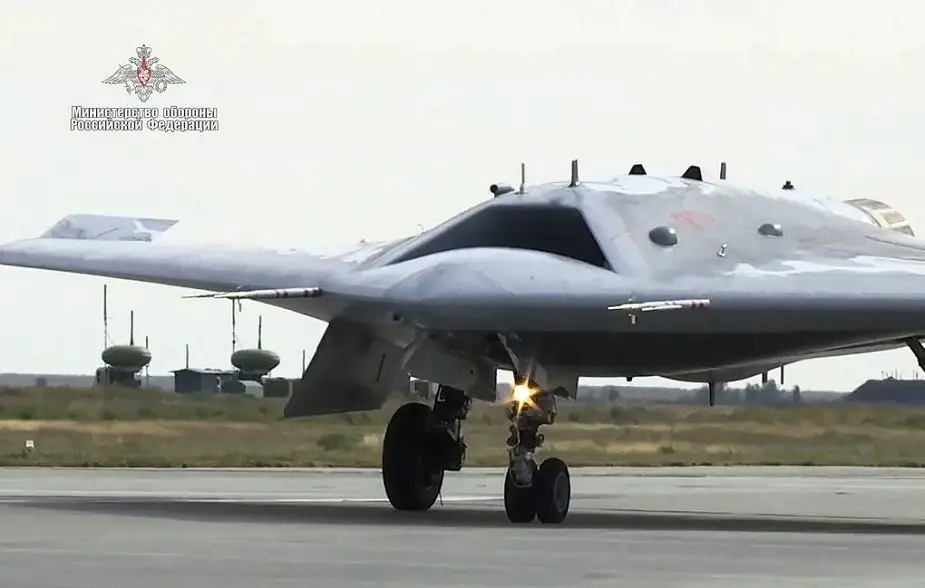Russia’s latest heavy attack drone Okhotnik (Hunter) will fire weapons for the first time during trials at a military aerodrome in southern Russia in 2020, a source in the domestic defense industry told TASS on October 16.
 Okhotnik UAV (Picture source: Russian MoD)
Okhotnik UAV (Picture source: Russian MoD)
"The Okhotnik’s trials in Akhtubinsk will be continued in 2020. As part of a new stage, all of the drone’s onboard air-launched weapons will begin to be tested for combat employment at the testing range of the 929th State Flight Test Center [of the Defense Ministry]," the source said.
Before the end of this year, the Okhotnik will perform a series of flights in Akhtubinsk without using armament. In some cases, the drone is set "to take to the skies several times day and night both on its own and together with fighter jets," the source added.
TASS has no official confirmation of this information yet.
Russia’s Okhotnik heavy attack drone developed by the Sukhoi Design Bureau performed its debut flight on August 3. The flight lasted over 20 minutes under an operator’s control.
On September 27, the Okhotnik performed a flight together with a Su-57 fifth-generation fighter jet. The drone maneuvered in the air in the automated mode at an altitude of around 1,600 meters and its flight lasted over 30 minutes.
The Okhotnik features stealth technology and the flying wing design (it lacks the tail) and has a take-off weight of 20 tonnes. The drone has a jet engine and is capable of developing a speed of around 1,000 km/h.
According to the data of Russia’s Defense Ministry, the drone has anti-radar coating and is outfitted with equipment for electro-optical, radar and other types of reconnaissance.
The remote-controlled Okhotnik model was unveiled at the Army-2019 international defense exhibition outside Moscow in late June.
A source in the domestic defense industry earlier told TASS that the heavy stealth attack drone Okhotnik would perform several more test flights this year.
"The program of the Okhotnik’s flight tests stipulates several more flights with the sequential complication of flight assignments, the source specified.
The drone will perform one of its flights in a partially autonomous mode: an operator on the ground will give only several commands, the source said. "A possibility is also envisaged for the drone’s completely autonomous flight without the operator’s participation when it takes off, performs its program and lands only under the control of its own guidance system."
© Copyright 2019 TASS. All rights reserved. This material may not be published, broadcast, rewritten or redistributed.






















